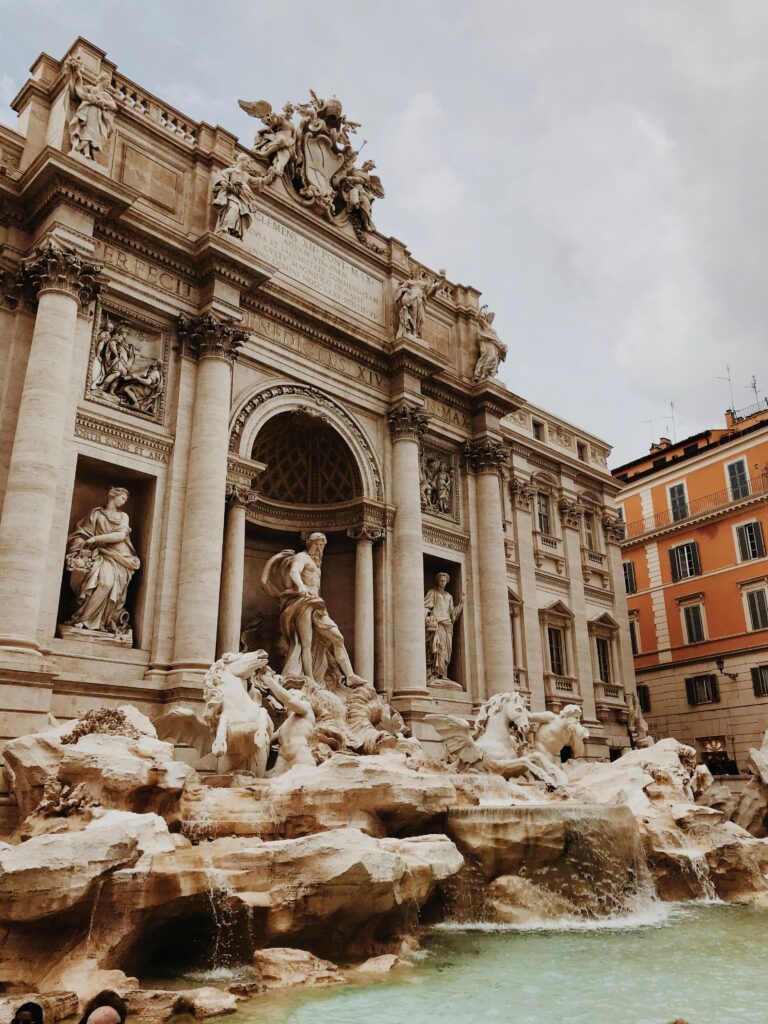
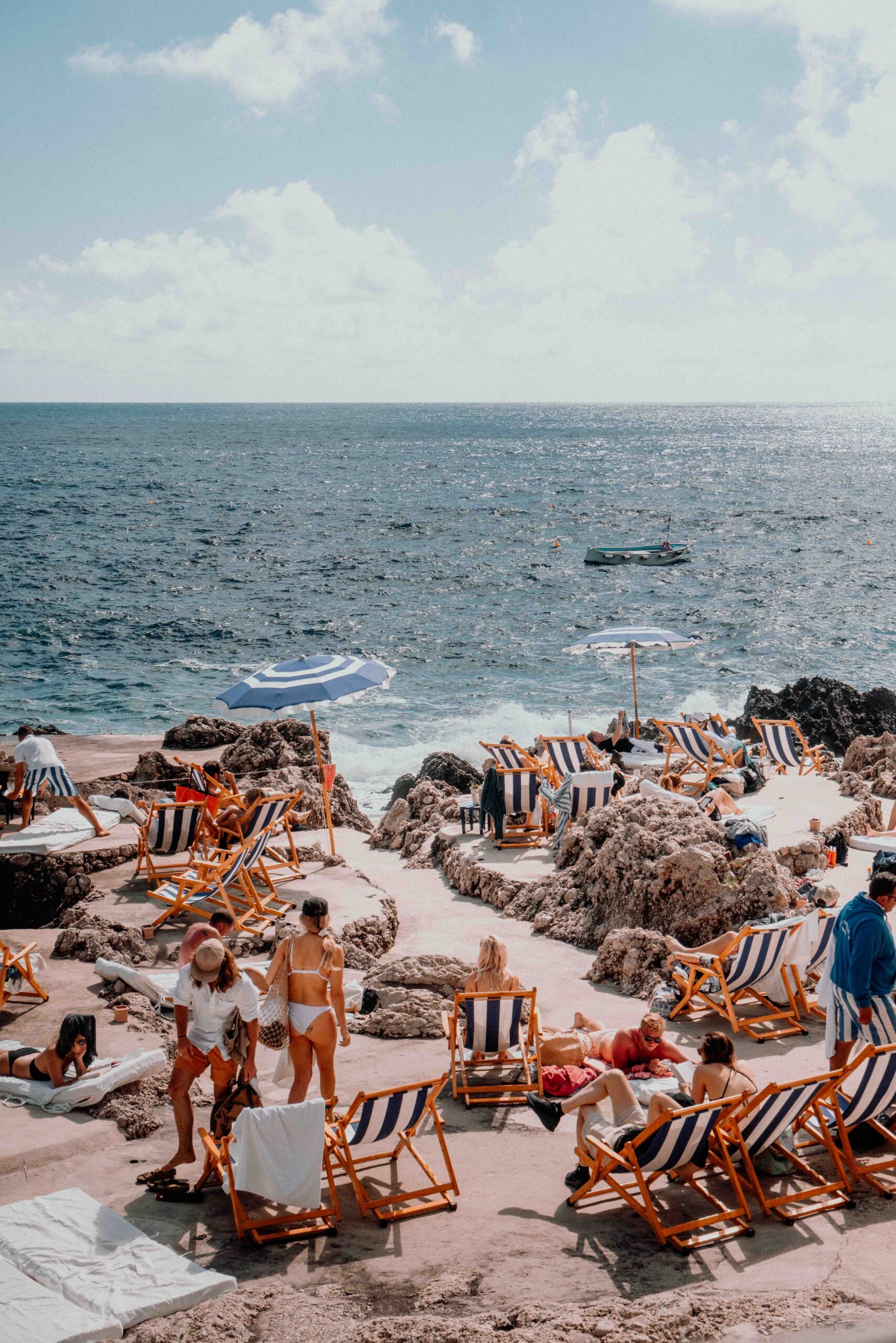
The South of Italy has a charm unlike anywhere in the world. From the cliffy coasts dotted with colorful homes to the charming narrow streets of Napoli.
Spending two weeks in Italy’s southern regions is a dream. There’s a lot to see and do, so starting to plan how you’re going to do it all in two weeks can be stressful— but don’t fret after countless trips to the South of Italy, I’ve got you covered with how to see Italy in two weeks with the ultimate Itinerary for Southern Italy.
This itinerary takes into consideration that you’d be flying in and out of Rome.
As the third-largest city in Italy, Naples is alive with its unique energy, combining centuries of rich history with the invigorating hustle and bustle of life today.
The city’s Historic Centre, a UNESCO World Heritage site, is a testament to its past, brimming with well-preserved artistic and architectural treasures. From the stunning frescoes in the Cappella Sansevero to the imposing Castel dell’Ovo rising above the Tyrrhenian Sea, there’s a sight to see at every turn.
Yet, Naples is not just a city to be seen but also to be tasted. Birthplace of the world’s favorite dish, the pizza, Naples prides itself on its gastronomy. Pizzerias dot the cityscape, serving up authentic Neapolitan pizzas with their signature thin crusts and flavorful San Marzano tomato sauce. The smell of fresh basil, bubbling mozzarella, and yeasty dough wafts through the air. Don’t forget to complement this with a cup of locally grown coffee – a Neapolitan ritual.
An old Italian is saying that goes, “Vedi Napoli e poi muori!” – “See Naples and die!”. The saying encapsulates the belief that once you’ve seen Naples, you’ve seen everything worth seeing.
From the Rome airport, you can take a bus to the main train station, and from there you can take the train to Napoli.
You can either book your train directly at the train station or book in advance online on ItaliaRail
Alternatively, if you don’t feel like navigating the rails, you can arrange a private transfer from Rome to Napoli.
There’s no shortage of things to do and see in Napoli. Since each traveler is different, I’ve rounded up the best of the best of what to do so that you can tailor your activities to your personal preferences, you truly can’t go wrong with any of these ideas:
The historic center of Naples is a UNESCO World Heritage site. It goes without saying that it’s absolutely a must-visit area with its narrow streets, vibrant atmosphere, and historical landmarks.
Take a stroll through Spaccanapoli, the main street, and discover ancient churches, bustling markets, and traditional pizzerias.
While some people like to wander on their own, I really enjoy booking a walking tour on the first day in a new city to get my barrings and to know what I am looking at— plus when you book a tour with a local they know the absolute best places to go for food and fun in town.
Go on a gastronomic adventure by embarking on a captivating Street Food Tour in Napoli.
Among the cities in Italy, none rivals Napoli’s profound adoration for food. The residents infuse every culinary creation with an unparalleled passion, resulting in an extraordinary culinary scene.
Going on a Street Food Tour led by a knowledgeable local guide, you will unlock a whole new perspective and profound appreciation for the art of gastronomy.
This museum houses an impressive collection of artifacts from Pompeii, Herculaneum, and other archaeological sites. Admire ancient Roman sculptures, mosaics, and frescoes, including the famous Farnese Bull sculpture.
If you’re a history buff and want more information than what you can gather just wandering around the museum consider booking this private tour that’s led by a local archaeologist.
Explore the underground catacombs, which date back to the 2nd century AD, and learn about early Christian burial practices. The catacombs contain tombs, frescoes, and the final resting place of Saint Gennaro, Naples’ patron saint.
This activity is best done with a tour otherwise you’ll find yourself just wandering around below ground not knowing what you’re looking at.
Explore the opulent Royal Palace (Palazzo Reale) with its grand interiors, including the royal apartments, Throne Room, and Royal Chapel. The entrance fee is around € 10, but it’s worth every penny to see how the Italian Royals once lived.
While you’re there, don’t miss the stunning Teatro di San Carlo, one of the oldest opera houses in Europe, located nearby.
Take a leisurely stroll along the Naples waterfront promenade, known as Lungomare, and enjoy the views of the Bay of Naples and Mount Vesuvius. This area offers charming cafes, restaurants, and a lively atmosphere.
Head up to Castel Sant’Elmo, a hilltop fortress, for breathtaking views of Naples. Explore the castle’s grounds, visit the nearby Certosa di San Martino monastery, and enjoy the sweeping vistas of the city.
The entrance is free, the views are stunning and you’ll work off some of the pizza you’ve been eating— it’s a win-win-win.
Below Naples, there’s another world waiting to be discovered. Delve into the underground tunnels of Naples, known as Napoli Sotterranea, and discover the city’s hidden history. Take a guided tour through ancient Greek and Roman aqueducts, cisterns, and tunnels beneath the streets.
If you need to take a break from the hustle and bustle of Naples head out to the scenic Phlegrean Fields just outside the city.
This is best done by e-bike with a guided tour that takes you along the coastline to the volcanic Lake Averno. Learn about the history of the ancient sites along the ride and relax over a winery lunch featuring local organic wines and dishes.
When in the birthplace of pizza, you should not only indulge in the delicacy but learn how to make it the authentic way. Sign up for a pizza cooking class to learn the history of pizza while getting your hands dirty and maybe toss the dough in the air while saying, Mamma Mia! (It’s fun to be cliche sometimes).
Naples is the birthplace of pizza, so indulging in a traditional Neapolitan pizza is a must. The classic Margherita pizza, topped with tomato sauce, mozzarella cheese, and fresh basil should be had at least once while in Napoli.
This flavorful pasta dish is made with a sauce consisting of tomatoes, garlic, black olives, capers, and oregano. It has a slightly spicy and tangy taste.
Naples is famous for its fresh buffalo mozzarella cheese, known as mozzarella di bufala. It has a creamy texture and delicate flavor, and you’ll find it used in dishes like Caprese salad and pizza Margherita.
As Naples is located by the sea, seafood plays a significant role in the local cuisine. Impepata di Cozze is a dish of fresh mussels cooked with tomatoes, white wine, black pepper, and parsley. It is often enjoyed with a piece of bread to soak up the flavorful sauce.
Another unique Neapolitan specialty is pizza fritta, which is deep-fried pizza dough. It is stuffed with ingredients like ricotta cheese, provola cheese, cold cuts, meatballs, or vegetables, and then fried until crispy.
Sfogliatella is a popular pastry in Naples, consisting of thin layers of flaky pastry filled with sweet ricotta cheese or a citrus-flavored cream. It comes in two varieties: sfogliatella riccia (curly) and sfogliatella frolla (smooth).
Located at Via Filangieri, 39, Ristorante Mattozzi is a historic restaurant known for its traditional Neapolitan cuisine. Don’t miss their famous Margherita pizza, prepared with fresh ingredients and a perfect balance of flavors.
Situated at Vico Lungo Teatro Nuovo, 103, Trattoria da Nennella is a charming trattoria beloved by locals. Indulge in their hearty pasta dishes, such as the classic Spaghetti alle Vongole (spaghetti with clams), prepared with the freshest seafood.
Located at Vico Lungo Gelso, 77, Cibi Cotti ‘Nonna Anna’ is a hidden gem offering traditional Neapolitan street food. Try their mouthwatering Cuoppo Napoletano, a cone filled with an assortment of fried seafood and vegetables.
Situated at Via della Sapienza, 40, Cantina di Via Sapienza is a rustic wine bar and restaurant. Enjoy their selection of fine wines paired with delectable Neapolitan dishes. Don’t miss their Ragu Napoletano, a slow-cooked meat sauce served with pasta.
Located at Vico Giuseppe Maffei, 5, Taverna dell’Arte offers a cozy and intimate dining experience. Savor their signature dish, Polpo alla Luciana, which features tender octopus stewed in a rich tomato sauce.
Situated at Via Medina, 22, Ristorante Il Garum is a sophisticated restaurant with a focus on seafood. Try their Gnocchi allo Scoglio, a flavorful dish of potato dumplings served with a medley of fresh seafood.
For more recommendations of where to eat in Napoli read this guide to eating in Napoli by Food Tour Rome.
Picking your home base in Napoli is no easy feat. There’s a lot to consider— not only the level of luxury you’d like but also what kind of atmosphere you want to experience when you walk out of the front door every day.
Do you want to be in the action of the city? or right on the beachfront? Luckily there’s no shortage of sustainable accommodation in Naples— and some of the cutest boutique hotels I’ve ever seen. For the full rundown on where to stay in Naples head to this article on the best boutique hotels in Naples.
The Amalfi Coast, also known as the Costiera Amalfitana in Italian, is a picturesque stretch of coastline located in southern Italy.
It overlooks the Tyrrhenian Sea and the Gulf of Salerno, and it is situated south of the Sorrentine Peninsula and north of the Cilentan Coast.
This region is celebrated worldwide for its stunning Mediterranean landscape, natural beauty, and cultural heritage.
The Amalfi Coast is named after the town of Amalfi, which serves as its main historical and political center.
The coastline is dotted with enchanting towns, such as Positano, Sorrento, Ravello, and Amalfi itself.
These towns are perched on the rocky slopes of the Monti Lattari mountain range, with some extending down to the turquoise waters of the Tyrrhenian Sea.
Travel from Naples to Sorrento by train or ferry, which takes approximately one hour. From Sorrento, you can easily access various towns along the Amalfi Coast by bus, just be sure to know the bus schedule and when the last bus of the day leaves.
The drive from Naples to The Almafi Coast changes slightly at the end depending on where your final destination on the Almafi Coast is but the general gist is:
Depart from Naples: Start your journey from Naples, which is located on the western coast of Italy.
Take the A3 Highway: From Naples, head southeast and merge onto the A3 highway (Autostrada A3) towards Salerno.
Continue on the A3: Stay on the A3 highway for approximately 40 kilometers (25 miles), following the signs for Salerno.
Take the Exit: Take the exit for Vietri sul Mare/Costiera Amalfitana. This exit will lead you onto the SS163, also known as the Amalfi Coast Road (Strada Statale 163).
Alternatively, you can set up a private transfer from Napoli to your destination along the Amalfi Coast.
While Positano and Sorrento are the most famous cities in the Almafi, I’d highly recommend exploring some of the lesser-known cities that have a lot of charm and way fewer tourists.
Salerno is known as the gateway to the Amalfi Coast. With its bustling streets, lively markets, and historic architecture, Salerno sets the stage for the grandeur that awaits. Stroll along the picturesque Lungomare Trieste promenade, and immerse yourself in the vibrant atmosphere of this coastal gem.
Prepare to be enchanted by the colorful ceramics that adorn the streets of Vietri sul Mare. This town is a haven for ceramic enthusiasts, offering an array of beautifully crafted pottery. Take a leisurely walk through its charming alleys and soak up the artistic ambiance that permeates the air.
Calling all seafood lovers! Cetara is a fishing village that will tantalize your taste buds with its delectable culinary offerings. Indulge in fresh anchovies, and local specialties like colatura di alici (anchovy sauce), and savor the flavors of the Mediterranean. The town’s enchanting harbor adds to its coastal charm.
Hidden away from the tourist crowds, Erchie beckons with its serene beauty. Nestled between rugged cliffs and a pristine beach, this small town offers a tranquil escape. Enjoy a leisurely day on the sandy shores or explore the nearby hiking trails for breathtaking views of the coastline.
Welcome to Tramonti, a picturesque village nestled in the mountains. Known for its lush vineyards and verdant landscapes, Tramonti is a paradise for wine enthusiasts. Taste the exquisite wines produced in this region and let the tranquility of the surroundings transport you to a state of bliss.
Get ready for sun, sand, and relaxation in Maiori. This coastal town boasts one of the longest beaches on the Amalfi Coast, inviting you to bask in the Mediterranean sunshine. Take a leisurely stroll along the palm-lined promenade, and savor the laid-back vibe that permeates this seaside retreat.
A hidden gem awaits in Minori, a town brimming with history and charm. Explore the ruins of the Roman Villa Maritime, indulge in sweet pastries from local pastry shops, and wander through the narrow streets lined with colorful buildings. Minori’s captivating atmosphere will leave you captivated.
Prepare to be swept away by the enchanting beauty of Ravello. Perched high above the sea, this town offers panoramic views that will take your breath away. Visit the world-famous Villa Cimbrone and its stunning gardens, attend a concert at the renowned Ravello Festival, and immerse yourself in the artistic and cultural heritage of this captivating hilltop town.
As the oldest town on the Amalfi Coast, Scala exudes a sense of timelessness and tranquility. Wander through its narrow streets, discover hidden corners, and admire the ancient architecture. Scala’s serene ambiance offers a peaceful escape from the bustling tourist hubs.
Tucked away between cliffs and a vibrant beach, Atrani is a hidden treasure waiting to be discovered. Lose yourself in its charming maze of narrow streets, adorned with colorful flowers and traditional houses. The simplicity and authenticity of Atrani will capture your heart.
Ah, the jewel of the coast, Amalfi! Prepare to be captivated by its timeless beauty and rich history. As you stroll through the vibrant Piazza del Duomo, adorned with its impressive cathedral, you’ll feel like you’ve stepped into a storybook. Explore the narrow alleys, browse the charming shops selling local limoncello and handmade paper, and soak in the lively atmosphere of this coastal gem.
Nestled between cliffs and the sparkling sea, Conca dei Marini is a tranquil oasis. Visit the famous Grotta dello Smeraldo, an enchanting emerald cave that will transport you to an ethereal underwater world. Take in the breathtaking views from the picturesque Belvedere della Madonna, and let the serenity of Conca dei Marini wash over you.
Prepare to be amazed by the dramatic beauty of Furore, known as the “painted village.” Perched on the edge of a deep fjord, this charming town boasts vibrant murals adorning its buildings, adding a splash of color to the already awe-inspiring landscape. Don’t miss the breathtaking Fiordo di Furore, a hidden gem that will leave you speechless.
As you arrive in Praiano, be prepared to be charmed by its laid-back atmosphere and breathtaking vistas. From its hillside perch, you’ll be treated to panoramic views of the sparkling sea and the rugged coastline. Take a leisurely stroll along the Path of the Gods, a scenic hiking trail offering awe-inspiring vistas at every turn.
Positano, the epitome of coastal chic and Instagram fame! This glamorous town is a magnet for dreamers seeking a slice of paradise. With its pastel-colored houses cascading down the cliffs, boutique shops, and trendy beach clubs, Positano exudes a sense of effortless elegance. It’s a must-see while on your two weeks in Italy tour.
A hidden gem awaits in Nerano, a peaceful fishing village known for its unspoiled beauty and mouthwatering seafood. Indulge in a leisurely lunch by the sea, where you can feast on the freshest catch of the day. Afterward, soak up the tranquility of the secluded beaches and let the serene atmosphere of Nerano wash away your worries.
Last but definitely not least, Sorrento awaits with its blend of history, culture, and Mediterranean charm. Explore the winding streets of the historic center, visit the bustling Piazza Tasso, and indulge in the local delicacies, such as the famous limoncello. Sorrento’s vibrant atmosphere and breathtaking views across the Bay of Naples.
Tour The Different Cities
While you’re on the Amalfi Coast you’ll definitely want to venture down the coast to explore the cities that make this area of Italy so popular. While you’ll definitely want to see the iconic shorelines of Positano that are dotted with colorful houses, make sure to leave time to explore some of the lesser-known cities.
The best way to city-hop on the Almalfi Coast is by car and when in Italy you should do it in style in the original Fiat 500 cars. It’s an experience that you’ll never forget, and you’ll have some of the coolest photos with these little toy-looking cars adding a little something extra to them.
Head to Capri Island and (Hopefully the Blue Grotto)
As if there wasn’t enough to see on the mainland, the Alamfi Coast is home to one of the world’s most famous islands: Capri.
It’s renowned for its breathtaking natural beauty. It has rugged cliffs, picturesque landscapes, crystal-clear turquoise waters, and stunning rock formations such as the iconic Faraglioni rocks.
If you have the chance to enter the Blue Grotto (Blue Cave) be sure to do it! It’s not always available because the water needs to be calm to enter through a small opening via a rowboat on the side of the island. I was lucky enough to be able to enter on my first trip to Capri and it was 100% worth every penny, if you tip a little extra they’ll even let you jump in and swim in the grotto. You’ll need to book a tour to do this and I highly recommend booking in advance because they fill up quickly.
Swim at Bagni della Regina Giovanna
Once the private swimming pool of Queen Giovanna (hence the name) is now a semi-secret cove beach made by rock formation, about 15 minutes from Sorrento.
You’ll have to hike down a bit to the beach but it’s worth the adventure for the crystal clear waters and a truly royal swimming experience. Plus the views before you ascend down into the cove are breathtaking, on one side you’ll be able to see Capri, and from the other panoramic views of Sorrento.
Hike the Pathway to the Gods
For all the adventure seekers and outdoors enthusiasts the Pathway to the God Tail should be on the top of your list of what to do in the Amalfi Coast. You don’t need a tour to get there, but if you’d feel more comfortable venturing out with someone who knows the path, there are plenty of organized group hikes.
The Path of the Gods runs between the towns of Bomerano (a hamlet of Agerola) and Nocelle, which are situated high above the Amalfi Coast. The trail offers hikers the opportunity to experience the beauty of the region from above.
Length and Difficulty: The trail is approximately 7.8 kilometers (4.8 miles) long and is considered a moderately challenging hike. It typically takes around 3 to 4 hours to complete, depending on the pace and fitness level of the hiker.
Access: To reach the starting point of the trail in Bomerano, you can take a bus or taxi from the nearby town of Amalfi. From the endpoint in Nocelle, you can descend further down to Positano, a popular coastal town, via a series of steps known as the “Pathway of the Lemons” (Sentiero dei Limoni).
Indulge in Lemon
Speaking of Lemons, the region is known for its lemon production, so there’s no shortage of Lemon-focused activities to indulge in. From touring the local lemon groves to going on a limoncello-tasting walking tour. There’s something lemony for everyone.
My personal favorite is the Lemon Marmalade tour, the jams are some of the best I have ever had in my life, and it’s set in a Lemon garden that is absolutely stunning.
Take to the Water
The best views of the Almafi coast are those that come from being on the water. Looking back at the coastline you’ll be thinking pinch me, this can’t be real. Luckily, it’s pretty easy to take. to the water while you’re on the Almalfi. You can hire a boat for the day with a professional captain or take a coastal boat tour.
If you want a more active approach, rent kayaks. Since you’ll be eating a lot of gelato and pasta,. this is a great way to stay healthy and fit while traveling.
Cook with Locals
As conscious travelers, it’s important to not only support the local community by using tours that are run by locals like those at Viator or get your guide, but it’s also important to connect with the local community and get to know their customs and traditions.
One of the best ways to do this in Italy is to cook and eat with locals. Now you might be thinking, how am I going to find locals that will invite me to their home and cook with me? Luckily for us, many locals have created postings on Viator to invite guests into their homes (or farms) for a meal. This is a truly unique experience that will give you unparalleled access to the real lives of the locals of The Almafi Coast.
Tour the Villas (and gardens) of Ravello:
Ravello is one of the most beloved towns in the Almalfi and it comes for good reason. It’s dotted with incredible villas that have stunning gardens, not to mention the panoramic views overlooking the sea.
While you’re in Ravello, you should make sure to tour Villa Rufolo and its gardens. Villa Rufolo is one of the most famous villas in Ravello. It dates back to the 13th century and is renowned for its lush gardens, enchanting courtyards, and stunning terraces. The villa has also been a source of inspiration for many artists, including Richard Wagner, who found inspiration for his opera “Parsifal” while visiting Villa Rufolo.
Gnocchi alla Sorrentina: This classic dish features potato dumplings (gnocchi) served with tomato sauce (sugo), mozzarella, and basil. It’s a flavorful and comforting pasta dish.
Parmigiana di Melanzane: This dish is an eggplant parmesan made with layers of eggplant, tomato sauce, mozzarella, and Parmesan cheese, baked to perfection.
Treccia: Treccia is a type of mozzarella cheese made from cow’s milk. It is shaped into a thick braided form, similar to a plait. It can also be made from buffalo milk..
Cuoppo d’Amalfi: Cuoppo d’Amalfi is a popular street food in the town of Amalfi. It consists of a paper cone filled with freshly fried local seafood, such as fish and squid.
Insalata Caprese: This iconic salad is made with fresh tomatoes, mozzarella di bufala (buffalo mozzarella), basil leaves, olive oil, and a sprinkle of salt. It’s a simple and refreshing dish that showcases the flavors of the region.
Spaghetti Alle Vongole: Spaghetti Alle Vongole translates to spaghetti with clams. This dish typically consists of spaghetti cooked with olive oil, garlic, red pepper flakes, parsley, and fresh clams. The briny flavors of the clams infuse the pasta, creating a delicious seafood dish.
Alici di Cetara: Cetara is a town on the Amalfi Coast known for its anchovies (alici). Alici di Cetara are marinated or fried anchovies, which are a popular starter. The town is also famous for Colatura di Alici, a fish sauce made from anchovies that is used in various dishes.
Lemon Pasta: Any of the lemon pasta on the menu or rather, Pasta al Limone, should be tried— as the region is known for growing the best lemons in the world.
Pasticciotto Atranese: a local dessert filled with custard and black cherries.
Ristorante Da Teresa (Amalfi): This restaurant, located on the Santa Croce beach in Amalfi, is known for its authentic cuisine.
They serve classic dishes like frittura di paranza (fried small fish) and calamarata vongole e gamberi (pasta with clams and prawns). The menu features locally caught fish prepared in various delicious recipes.
Le Arcate (Atrani):
Situated in Atrani, Le Arcate is also known as the “cave restaurant.” While it might be Instagram famous for its location, the food definitely doesn’t disappoint.
They offer homemade pasta and dishes made with the catch of the day. Their specialties include paccheri con pesce spada (large tube pasta with swordfish), scialatielli con gamberi e zucchine (short, thick pasta with prawns and courgette), and grigliata di pesce (grilled fish).
The restaurant offers a charming setting both inside a cave and outside by the sea.
Trattoria San Francisco (Tramonti):
This rustic pizzeria and eatery in Tramonti is known for its unique pizza tramontina, which uses the same dough as bread and is topped with local specialties like Re Fiascone tomatoes, Menaica anchovies, and Cilento crushed olives. They also serve local salami, cheeses, and pasta e fagioli (pasta and beans).
Ristorante Maria Grazia (Nerano):
Situated on Nerano Beach, Ristorante Maria Grazia is a seafood restaurant with a rich local history. They offer a variety of dishes made with fresh seafood. The restaurant has a charming ambiance and is a popular spot where locals and visitors can enjoy delicious seafood together.
Palermo is a vibrant city nestled on the sun-kissed island of Sicily. It has a captivating blend of ancient history, rich cultural heritage, and Mediterranean charm.
As the capital of Sicily, this beguiling city effortlessly weaves together influences from Phoenician, Roman, Arab, and Norman civilizations, creating a truly unique ambiance that will linger in your mind long after your departure.
Even if you do nothing but wander through the bustling streets, you’ll be taken by this magical city’s architectural wonders and the aroma of Sicilian cuisine filling the air— although there are plenty of things to keep you busy while you’re there. From sandy beaches to castles and street markets to explore. Palermo will surely be a highlight of the trip.
First, you’ll need to head back to Napoli, just like getting there you can either drive or take the train, except this time you’ll need to head to the airport.
From there you’ll take a flight from Naples-Capodichino International Airport to Falcone-Borsellino Airport in Palermo, Sicily.
Palermo Cathedral
Palermo Cathedral, also known as the Cathedral of Santa Maria Assunta, is an impressive religious landmark located in the heart of Palermo, the capital city of Sicily, Italy. It is one of the most significant and iconic buildings on the island and holds great historical and architectural importance. It’s free to visit the cathedral, though a ticket is required to access the tomb, crypt, and roof areas.
Palazzo dei Normanni
This palace is rich in the history of Sicily as it’s occupants changed with the different rulers of the Island. Today i’ts not only an architectural gem but also the seat of the Sicilian Regional Assembly. It is open to the public, allowing visitors to explore its stunning halls, chambers, and historical treasures, including the magnificent Palatine Chapel (Capella Palatina).
Street Food Night Tour
Palermo is a city that doesn’t sleep and one of the absolute best ways to get to know the local culture of the city is to take a night food tour. This tour is an absolute must-do for any foodies that want to dive past the touristic restaurants and discover the way Sicilians really eat.
Ballarò Market and Vucciria Market
The Ballarò Market and Vucciria Market are two vibrant and bustling street markets located in Palermo, Italy. Each market has its unique ambiance, reflecting the local culture and traditions, making them must-visit destinations for tourists seeking an authentic experience.
Ballarò Market: The Ballarò Market is one of the oldest and most famous markets in Palermo. It is situated in the historical center of the city and stretches along the narrow streets of the Ballarò district. The market’s ambiance is lively, chaotic, and full of energy. Here you’ll find: colorful stalls and vendors, herbs, spices, and street food. It’s always bustling with locals and visitors. A great way to experience this market is paring a market tour with a cooking class with what you buy at the market.
Vucciria Market: Vucciria Market is also located in the historic center of Palermo. While it was once the city’s most famous market, it has transformed over the years and now offers a slightly different ambiance that has more of an Artistic atmosphere. It has become a popular spot for street artists, performers, and musicians, it comes alive in the evening. Many bars, clubs, and restaurants open their doors, and the market square becomes a social gathering place. In the market, you can find artisan workshops and boutiques selling unique handmade products.
Monte Pellegrino
Monte Pellegrino is a prominent mountain located on the northern coast of Sicily, near Palermo, Italy. This majestic peak is known for its scenic beauty, historical significance, and religious importance. Today it’s a popular hiking and biking destination for locals and adventurous travelers. If you’re looking to get into nature a bit during your trip you can explore the mountain on your own, or join a guided cycling tour, trekking trip, or hire a private van to take you around.
Anti-mafia Tour
It’s not a secret that Italy has a long history with the Mafia. However, the locals in Palermo have been fighting back with an Anti-Mafia movement that is working to take back their city. This is a truly unique and intriguing tour that takes you around the city explaining the Mafia’s long influence on the city and introduces you to the shop owners who have been putting their lives on the line to fight back against the Mafia.
Go to the beach
It wouldn’t be an Island vacation without a trip to the beach! Luckily for us, Palermo has no shortage of beautiful beaches to spend the day at. The top four that I would suggest going to are: Cefalù Beach, Mondello Beach, Balestrate Beach, or Capaci Beach. They’re all stunning so you truly can’t go wrong with any of them.
Opera performance at Teatro Massimo
When you think Opera house, an image of something like Teatro Massimo is probably what comes to mind. It’s the quintessential opera house with red velvet chairs and gold ornate moldings. It’s nothing short of incredible, you’ll feel like royalty as you sit in the crowd watching the performers.
If watching an Opera isn’t your cup of tea you can still bask in the beauty of the Opera house by taking a guided tour of it during the day.
Vibrant street art in the La Kalsa
One neighborhood that’s an absolute must is La Kalsa. It’s a historic neighborhood in Palermo, known for its vibrant street art scene. Street art has flourished in La Kalsa, transforming its walls and alleys into open-air galleries. The street art scene in La Kalsa is continually evolving, with new pieces appearing and older ones evolving or being replaced— so even if you’ve been, it’s never the same when you return.
Capuchin Catacombs:
If you’re a history buff or into dark tourism, don’t miss the Capuchin Catacombs. The catacombs were originally established in the 16th century by the Capuchin Friars, a religious order of the Catholic Church known for their simple and austere way of life. The friars began using the catacombs as a burial site for their deceased brothers, and over the centuries, it expanded to include not only Capuchin Friars but also other prominent citizens of Palermo.
The best way to see the catacombs are with a tour guide which usually includes an entrance ticket and a guided tour. This way you’ll skip the line and get to know all the secrets of the catacombs.
While you might think that you’ll be getting the “same old, same old” Italian dishes your whole trip, Sicilian food is distinctly different from the rest of the country— and they’re proud of it. Here’s exactly what you need to try while you’re in Palermo.
Arancini: These are deep-fried rice balls usually filled with ragù (meat sauce), mozzarella, and peas. Arancini get their name from their resemblance to small oranges (arancia means orange in Italian). They are a delicious and popular street food found throughout Sicily, including Palermo.
Pasta con le Sarde: This is a classic Sicilian pasta dish, especially popular in Palermo. It combines sardines, wild fennel, pine nuts, raisins, saffron, and breadcrumbs. The flavors come together to create a unique and delightful taste.
Panelle: Panelle are savory chickpea fritters, made from chickpea flour, water, salt, and sometimes parsley. They are deep-fried until crispy and are often served in a bread roll as a popular street food snack.
Caponata: Caponata is a traditional Sicilian sweet and sour vegetable dish. It typically includes eggplants, tomatoes, olives, capers, celery, onions, and a sweet and sour sauce made with vinegar and sugar. It can be served as a side dish or as a topping for bruschetta.
Cannoli: Cannoli are one of the most famous Sicilian desserts. They consist of crispy, tube-shaped pastry shells filled with a sweet and creamy ricotta cheese filling, often garnished with candied fruit or chocolate chips.
Sfincione: Sfincione is a thick Sicilian-style pizza, similar to focaccia but with toppings such as tomatoes, onions, anchovies, caciocavallo cheese, and breadcrumbs. It’s a popular street food and comfort food in Palermo.
Cuccìa: Cuccìa is a traditional Sicilian dessert associated with the feast of Saint Lucy (Santa Lucia) on December 13th. It is a sweet dish made with boiled wheat berries, ricotta, sugar, cinnamon, and chocolate chips.
Cassata Siciliana: Cassata is a classic Sicilian dessert that originated in Palermo. It consists of sponge cake soaked in liqueur and layered with sweetened ricotta cheese, candied fruit, and marzipan.
Babbaluci: Babbaluci are small snails served as a popular street food in Palermo. They are usually sautéed with garlic, parsley, and sometimes red pepper flakes.
Corona Trattoria
Corona Trattoria serves authentic Sicilian cuisine and has exceptional service. It is a family-run establishment, known for its high-end dining experience with a warm and charming atmosphere. The restaurant is run by a local Sicilian couple, adding a personal touch to the dining experience.
The menu at Corona Trattoria features a great selection of Sicilian dishes, with a focus on fresh seafood sourced from Terrasini, a town near Palermo. The restaurant also takes pride in using fresh farm foods for its dishes, infusing traditional recipes with a modern twist— and in case you’re wondering Corona means crown in Italian so it has nothing to do with covid-19.
Al Vecchio Club Rosanero
This restaurant is dedicated to Palermo football club Rosanero, and this theme is reflected in its decor, adding to its unique and authentic atmosphere. The staff mainly speaks Italian, so be sure to have your google translate at the ready if you’re not comfortable speaking in Italian.
The restaurant’s menu features a variety of dishes, including local appetizers, excellent vegetarian caponata, various pasta options, flavorful pizzas, and delicious seafood dishes. You’ll need to make a reservation in advance because it’s a small place that is very popular with locals.
Aja Mola
With a slogan of 100% Fatto in Mare (100% made in the Sea), you can bet that this restaurant is seafood-focused. They use fresh, high-quality ingredients and have a strong dedication to making sure that they show the best of Sicilian cuisine.
Aja Mola follows Slow Food principles and offers a regional wine list with great Sicilian naturals, ensuring a commitment to sustainability and local flavors.
Trattoria Bersagliere
If you’d like an authentic Sicilian dining experience in Palermo, Il Bersagliere Trattoria is your place. It offers traditional Sicilian dishes that showcase the richness of local flavors. The trattoria’s crowded ambiance and popularity among locals add to its authentic charm. You can get any of the
Moltivolti
Moltivolti is more than a restaurant, it’s a social project that promotes the use of food as a tool for inclusion and understanding of different cultures. Moltivolti’s menu is a celebration of differences and bridges various Mediterranean recipes, including influences from Senegal, Tunisia, Afghanistan, and Palestine, while incorporating the agricultural heritage of Sicily.
Puglia has recently become a beloved destination for sun-worshippers in Italy. The white-washed houses and charming coastal towns make for a relaxing way to end the final leg of your two weeks in Southern Italy tour.
Unfortunately, there aren’t any ferries from Palermo to Puglia, so you’ll have to fly from Palermo to either Bari or Brindisi airports.
Once you’re in Puglia you’ll either want to rent a car or get a private transfer to wherever you are going— I would highly recommend staying in a smaller town like Polignano or Lecce for a more relaxing atmosphere than staying in one of the larger cities. If you plan to go to multiple spots in Puglia I would consider renting a car or arranging day trips from one location.
Alberobello: Known for its unique trulli constructions, Alberobello in Puglia is a UNESCO World Heritage site, where you can wander through quaint stone dwellings with conical roofs and get a glimpse of historic rural life.
Polignano a Mare: Poised on a cliffside overlooking the Adriatic, Polignano a Mare boasts beautiful beaches, and enchanting old town streets, and is the birthplace of the famous Italian singer Domenico Modugno, who sang “Volare”.
Ostuni: Known as the “White City” for its stunning white-washed buildings, Ostuni offers panoramic views of the olive groves and the Adriatic Sea from its hilltop location, with a charming old town full of winding alleyways.
Monopoli: A lively port town, Monopoli features historic fortified walls, a grand cathedral, and the Castle of Charles V, all complemented by picturesque beaches and vibrant local markets.
Trani: This captivating seaport town features the majestic Romanesque Trani Cathedral, which sits elegantly by the harbor, offering an ideal blend of history, architecture, and seaside charm.
Lecce: Referred to as the ‘Florence of the South’, Lecce is famous for its Baroque architecture, impressive Roman amphitheater, and intricate stonework of the Basilica di Santa Croce.
Vieste: Set on the Gargano Peninsula, Vieste offers stunning coastal scenery, fine sandy beaches, and the iconic ‘Pizzomunno’ monolith standing guard over the sea, alongside a labyrinthine old town filled with character.
Martina Franca: Famous for its Baroque architecture, Martina Franca is a jewel in the Puglia region, home to the grand Palazzo Ducale and the annual Opera Festival in its historic center.
Gallipoli: This old seafaring town, divided into a modern and historic area, is renowned for its medieval alleys, the bustling fish market, and a castle that stands as a sentinel on its island setting.
Visit Alberobello: Famous for its unique trulli houses, which are distinctive cone-shaped roof huts made of limestone. These structures are so unique that they’ve been designated a UNESCO World Heritage Site. Visiting this town is a must-do while you’re in Puglia.
Explore the History of Lecce: Known as the “Florence of the South”, Lecce is famous for its baroque architecture. Highlights include the Basilica di Santa Croce and the Piazza del Duomo. I’d recommend hiring a guide to get the best experience and understand the depth of the history and charm of this town.
Relax on the Beaches: Puglia has some of Italy’s most beautiful beaches. Head to the Salento Peninsula for places like Torre Lapillo and Punta Prosciutto, or to the Gargano National Park for Baia delle Zagare and Cala Tonda.
Walk Around Ostuni: Often referred to as the “White City”, Ostuni’s old town is a maze of alleys, staircases, and arches, all painted white.
Explore the Grotte di Castellana: These are some of the world’s most spectacular caves, located near Bari. They stretch for over 3km and include the stunning White Cave. You can explore them by joining a tour that will provide you with all the necessary equipment.
Explore The Sea Caves along the Coast: The Grotte Di Castellana aren’t the only caves in Puglia, many sea caves are only accessible by water to explore. You can get to them by hiring a boat, joining a tour, kayaking, or even stand-up paddling.
Visit Trani: This coastal town has a beautiful port, a stunning Romanesque cathedral, and a medieval castle, all worth exploring.
Cook the Local Cuisine: Puglia is known for its fantastic food and wine. Don’t miss the chance to not only try but learn how to make orecchiette (a type of pasta), plus be sure to taste the region’s famous olive oil, and indulge in the Primitivo wine.
Polignano a Mare: Visit this charming town built on the edge of a craggy ravine pockmarked with caves. The town is known for its dramatic coastal views, especially from the terraces of the old town.
Castel del Monte: An iconic octagonal castle from the 13th century, which is also a UNESCO World Heritage site. It’s unique in its design and offers beautiful panoramic views.
Visit Gallipoli: A beautiful fishing village on the coast known for its gorgeous beaches, historic center, and vibrant nightlife.
Puglia is known for its rich and diverse cuisine that heavily relies on local produce, including olive oil, tomatoes, artichokes, fava beans, and seafood. Here are some dishes and foods you should try when you’re in Puglia:
Orecchiette con le cime di rapa: Orecchiette (“little ears”) pasta is one of the region’s specialties, often served with turnip tops, garlic, anchovies, and chili peppers.
Taralli: These are small, crunchy, ring-shaped biscuits often flavored with fennel seeds, black pepper, or onions. They’re the perfect snack with a glass of local wine.
Friselle: A twice-baked bread, similar to a dry bagel, typically topped with tomatoes, olive oil, and occasionally capers or anchovies.
Fave e cicoria: A traditional dish of pureed fava beans served with bitter chicory greens.
Burrata: Burrata is a creamy cheese that originates from Puglia. It’s similar to mozzarella but with a creamy center. It’s often served fresh with a drizzle of olive oil and a sprinkling of salt.
Panzerotti: These are similar to calzones but smaller. They’re made by folding pizza dough around a filling of tomatoes and mozzarella, and then frying until golden.
Risotto alla Pugliese: This risotto dish is prepared with local ingredients such as mussels, rice, potatoes, and onions.
Seafood: Being a coastal region, Puglia offers a variety of seafood dishes. Cozze ripiene (stuffed mussels) and polpo alla pugliese (Puglian-style octopus) are two popular choices.
Pasticiotto: A popular local pastry filled with cream. The typical version has a custard filling, but other varieties can include ricotta, chocolate, or cherry.
Primitivo Wine: Puglia is known for producing robust wines. Primitivo is a popular red wine, known for its berry-like flavor.
Trattoria Le Zie (Lecce)
Trattoria Le Zie was opened in 1950 and is one of the only traditional restaurants left in Lecce. It’s a no-frills type of place with pictures adorning the walls everywhere you look and carafes of house wine on almost every table. It’s a great place to try any of the local dishes like ciceri e tria, horse meatballs, and fava puree. You’ll need to make a reservation in advance because it’s no secret that this is one of the best spots in town.
Trattoria La Puritate (Gallipoli)
A rustic and charming seafood-focused restaurant in the quaint village of Gallipoli. The menu changes daily depending on what’s freshly caught that morning. Its ambiance is as good as the food with exposed vaults and a panoramic view of the sea. If you’re headed there in the summer months it’s highly advisable to make a reservation.
Osteria Caroseno (Castellana Grotte)
Osteria del Caroseno offers a unique blend of traditional and innovative Puglian cuisine. The rustic setting is perfect for a romantic dinner or casual outing, with reasonable prices for exceptional food and service. Al fresco dining is an option during warmer months. Highlights include fried mozzarella balls, homemade gnocchi, and sea bass, complemented by a variety of local wines. The attentive staff enhances the dining experience. It’s a must-visit for foodies seeking to experience Puglian cuisine.
Ricciolandia (Monopoli)
Made famous by Anthony Bourdain during his trip to southern Italy in his Parts Unknown series, Ricciolandia doesn’t disappoint. It’s primarily a seafood restaurant known for its beautiful location on the sea. The key menu items are sea urchins, monkfish, calamari, and spaghetti vongole. Anthony Bourdain liked the Spaghetti ai ricci di mare, a pasta dish with sea urchin roe the best.
Grotta Palazzese (Polignano a Mare)
If you are after something a little more luxurious, Grotta Palazzese is a stunning and unique restaurant located in Polignano a Mare. It’s built into a centuries-old limestone cave overlooking the Adriatic Sea, providing one of the world’s most breathtaking dining experiences.
Your final day will be focused on getting back to Rome to fly home. Since we’ve made our way across the southern part of Italy, you’ll either need to fly or take a longer train to get back to Rome.
Flying: Flying is the easiest and fastest way to get from Puglia to Rome. You’ll make your way to the Bari airport from whichever town you’ve decided to make your home base. From there you’ll take a flight to Rome to catch your flight home.
Train: From Bari to Rome on the train is about 6 hours. Once you get to Rome’s central station you’ll need to catch a shuttle bus to the airport.
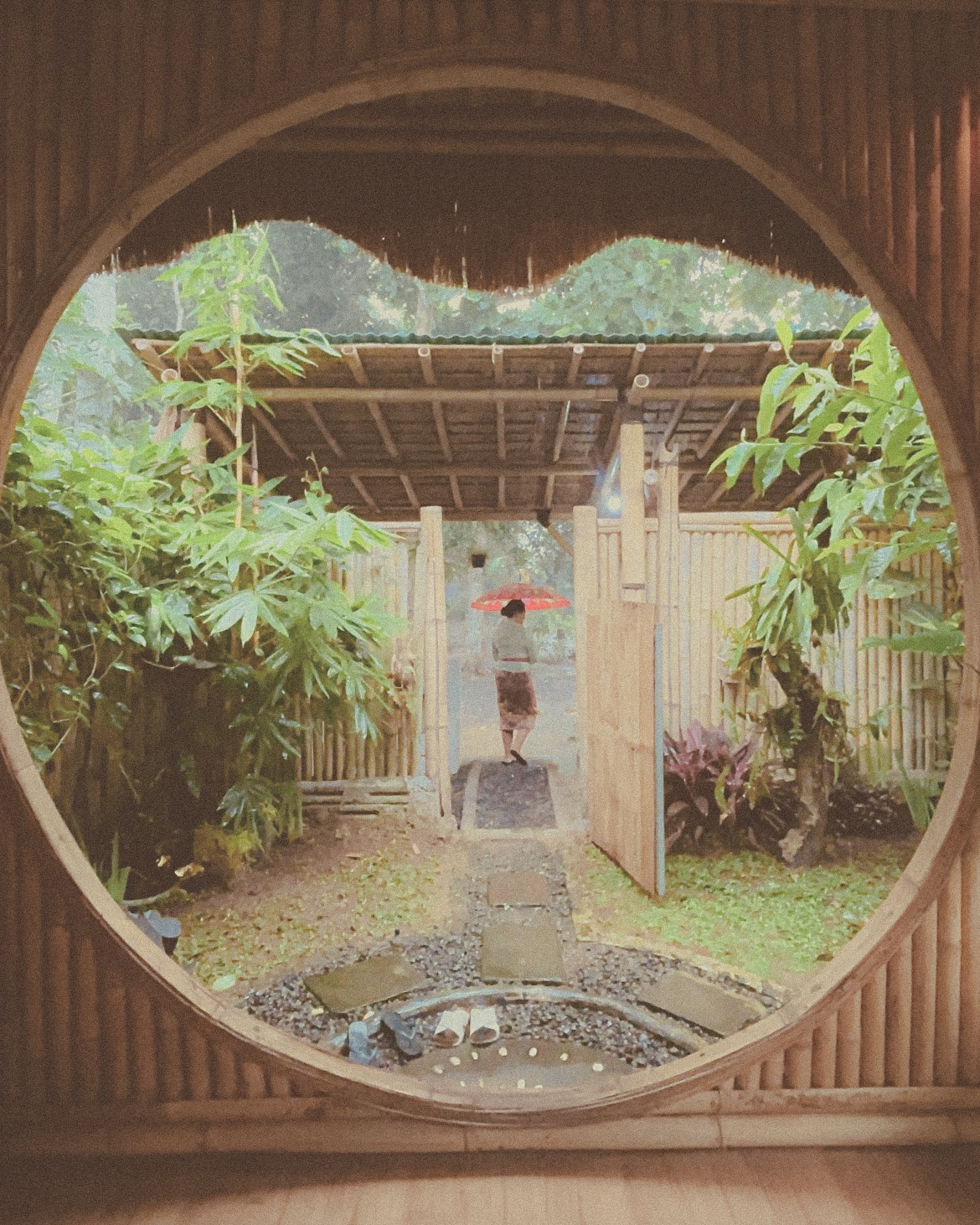
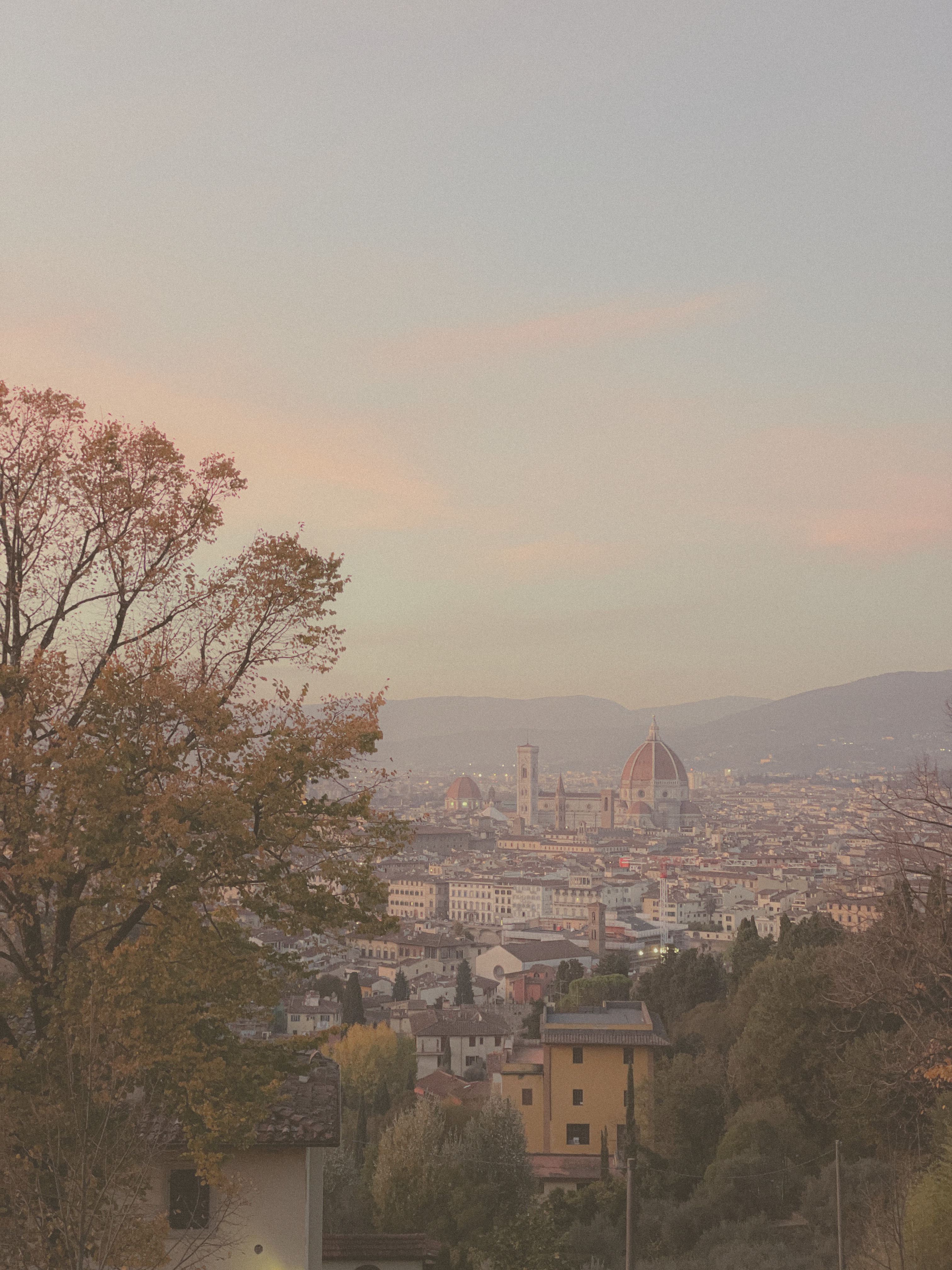
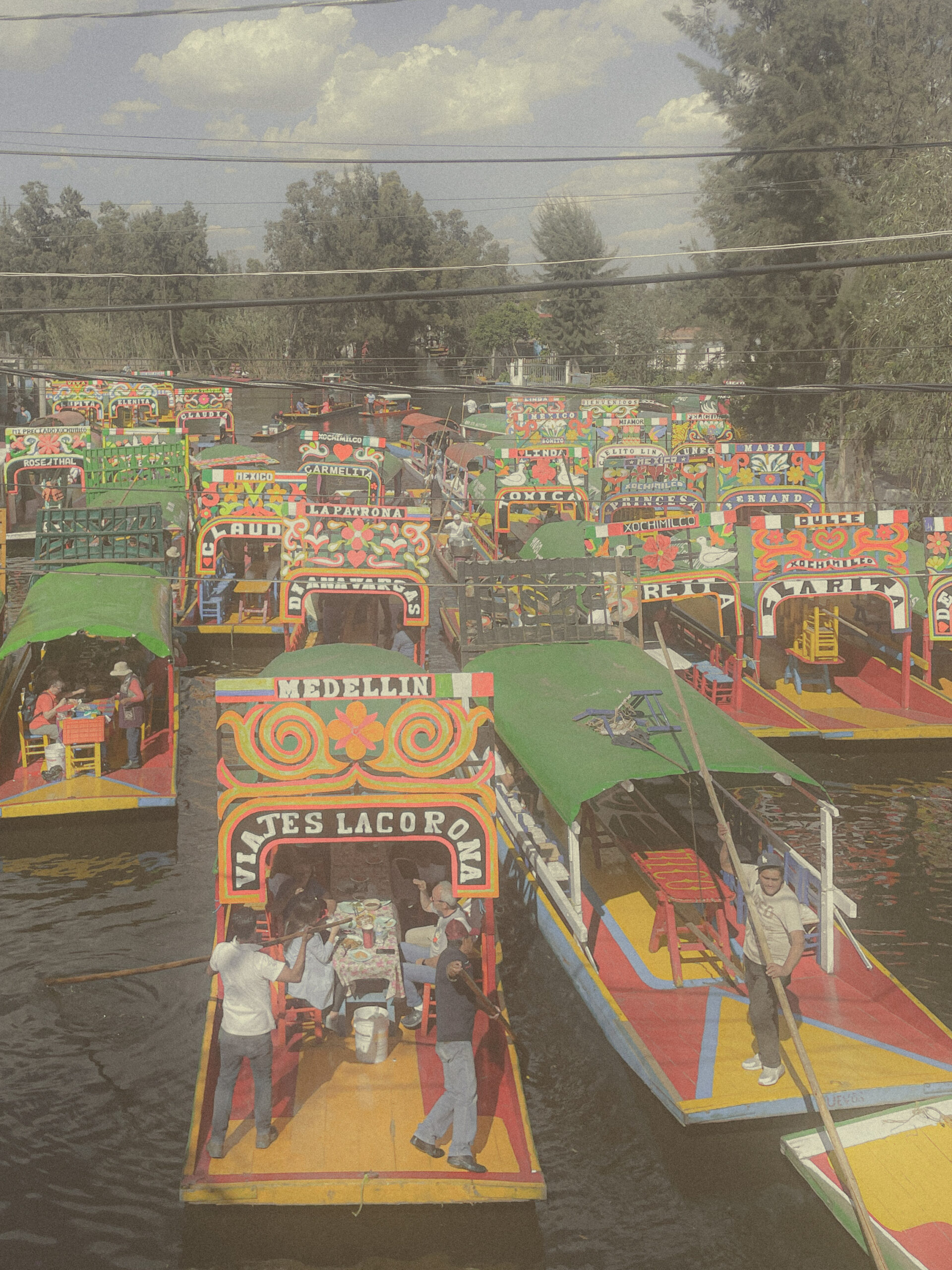
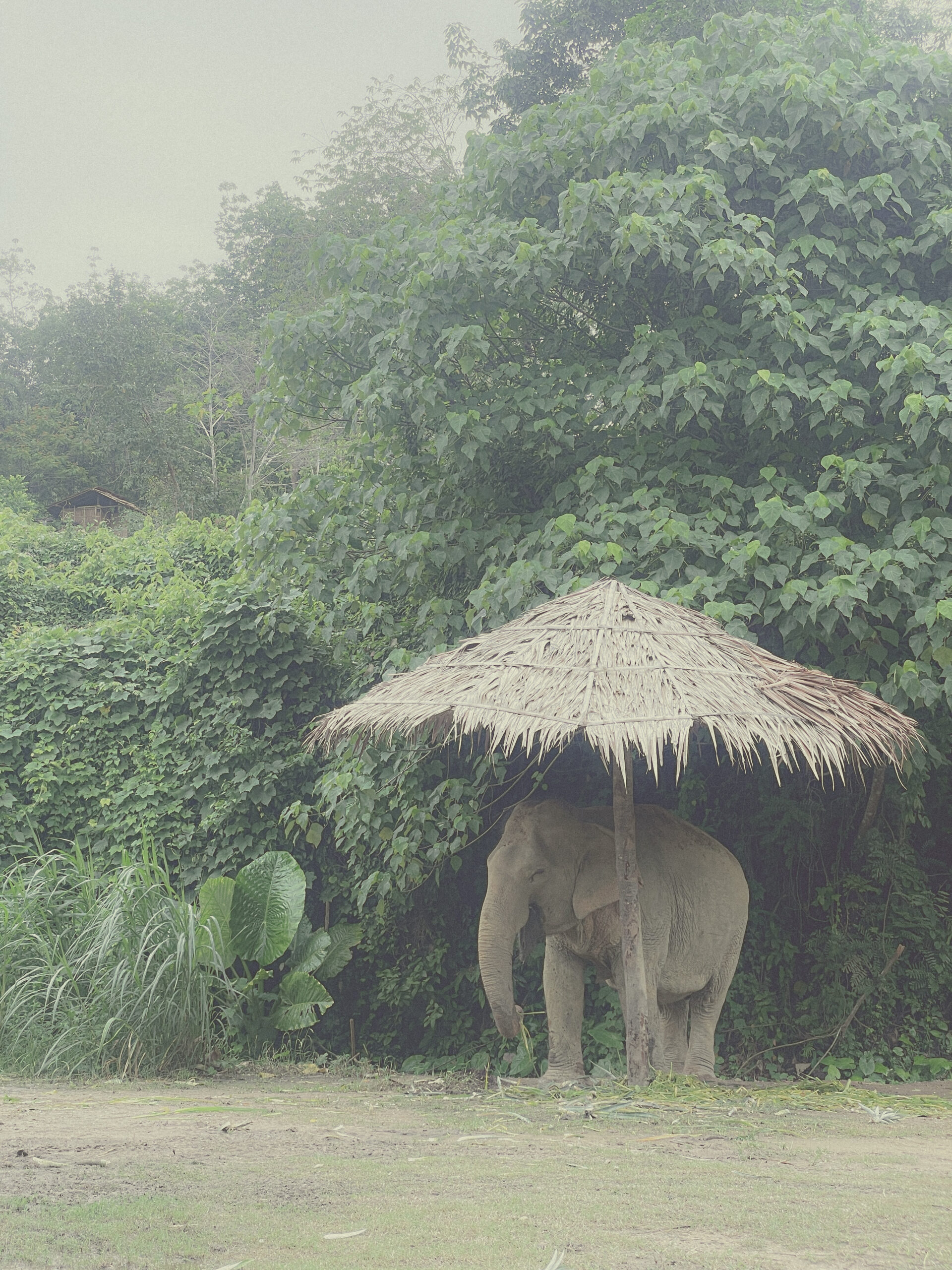

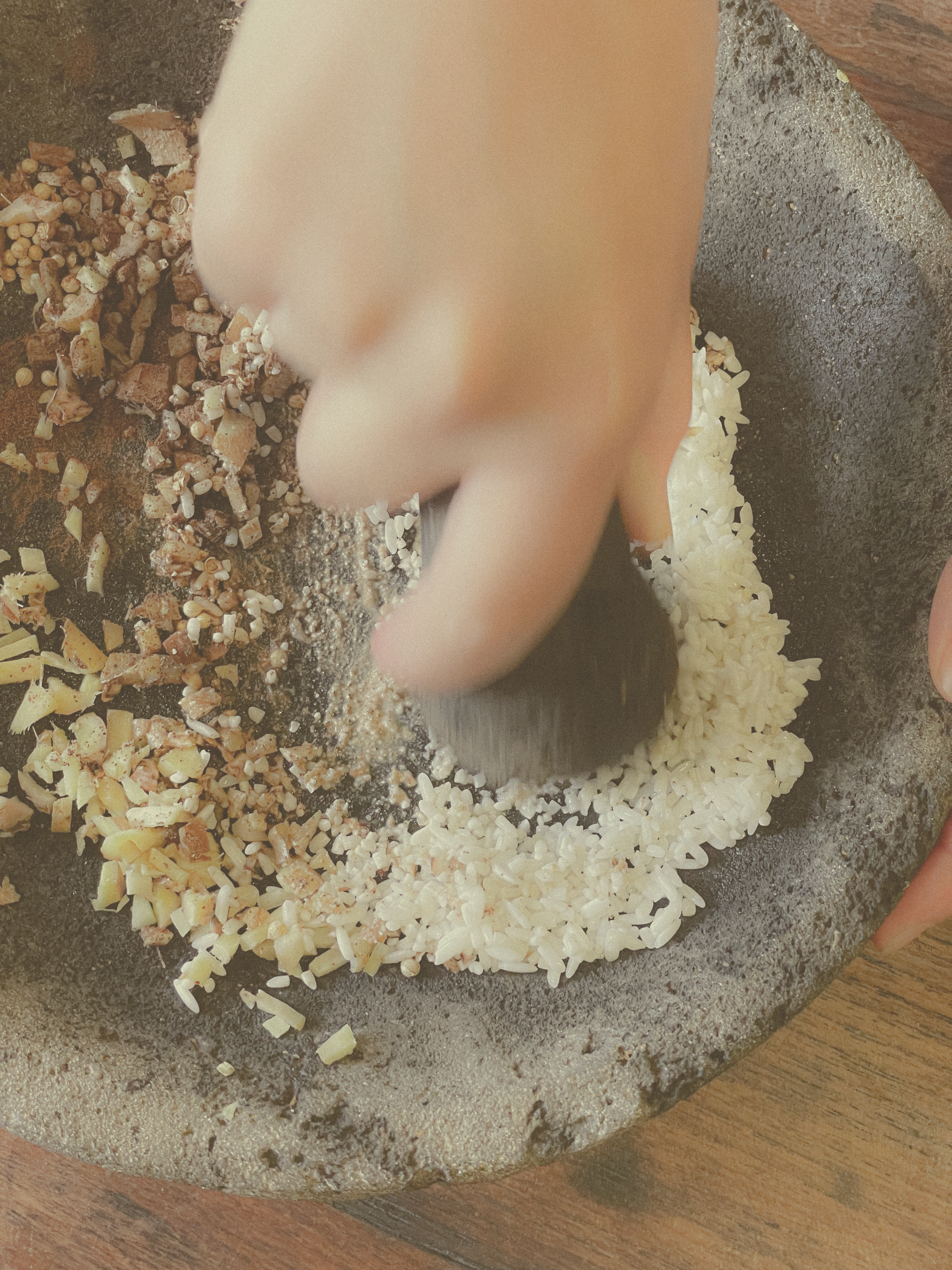



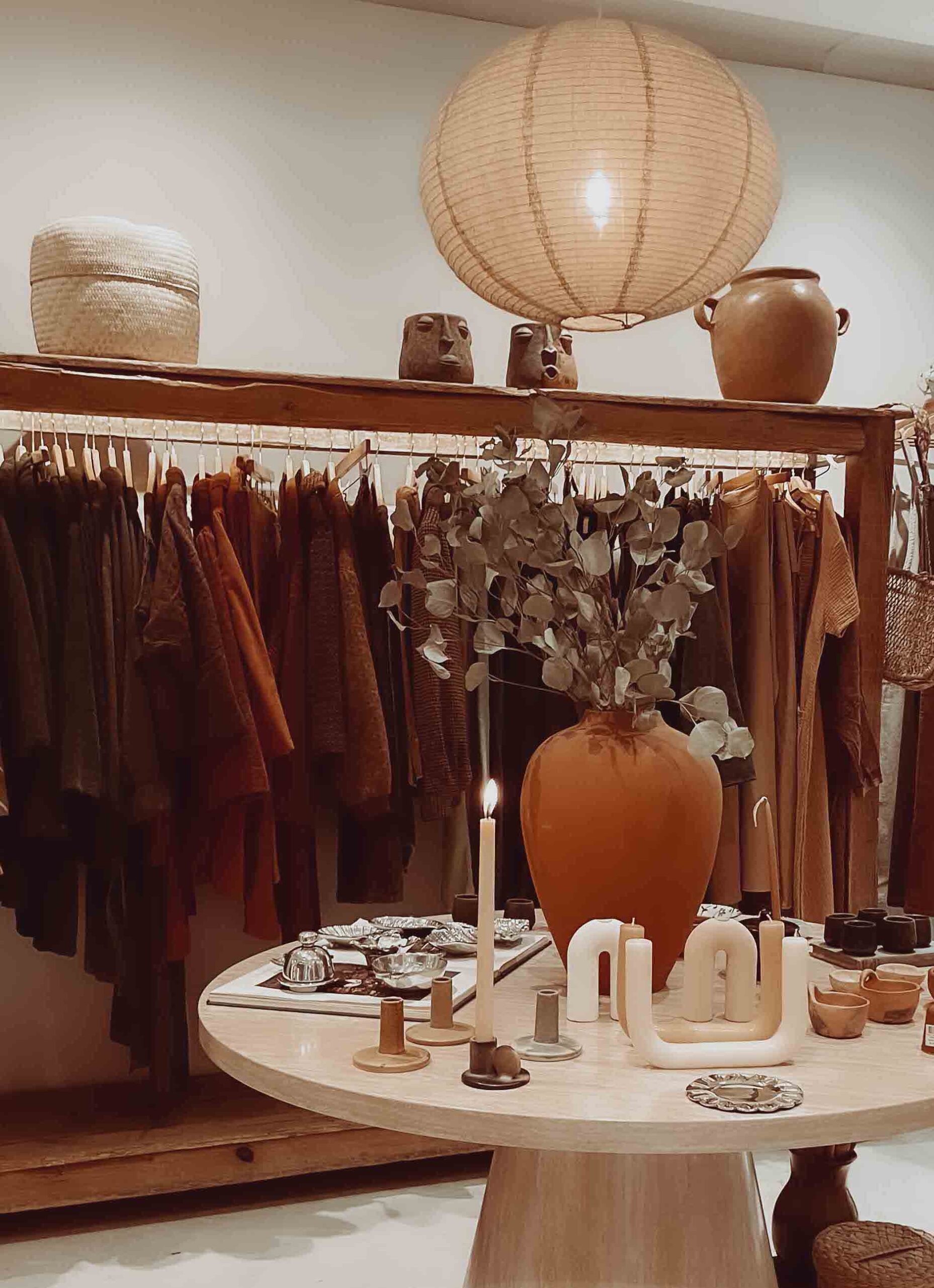
© 2023 Maia Conscious Living Privacy Policy | Gabs Nardo LLC
One Response